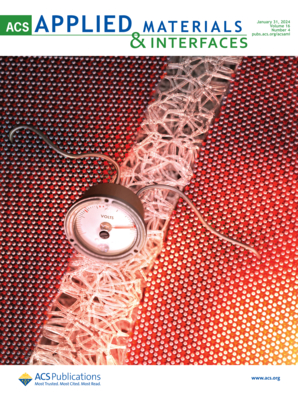类风湿性关节炎的 "芯片滑膜关节 "前景看好
IF 8.3
2区 材料科学
Q1 MATERIALS SCIENCE, MULTIDISCIPLINARY
引用次数: 0
摘要
类风湿性关节炎(RA)影响着全球数百万人,但可用于治疗的药物却很有限,因此,更全面地了解炎症背后的根本原因和机制以及开发新型治疗方法来控制炎症、减轻或避免相关伤害至关重要。显然,目前的体外模型无法忠实地复制关节疾病的所有方面,因此无法有效地作为疾病研究和药物测试的工具。芯片上器官(OoC)技术是一种创新平台,通过模拟细胞的空间排列和器官间的交流,它能比传统方法更真实地模拟活体组织的微环境和生理状态。这项技术可以精确控制液体流动、营养交换以及理化信号(如生物电、机械刺激和剪切力)的传输。此外,传感器、3D 打印和人工智能等尖端技术的整合也增强了这些模型的功能。在此,我们将深入探讨 OoC 模型,尤其关注 "芯片滑膜关节",概述其结构和功能,强调该模型在促进我们对 RA 的了解方面的潜力。我们首次整合了有关各种 OoC 模型的实际证据及其在 RA 研究中用于多系统疾病研究的可能性,并介绍了芯片在 RA 病因和病理机制研究、药物研究、疾病预防和人类精准医疗方面的前景和机遇。尽管仍存在许多挑战,但作为一种接近生理学和动力学的体外模型,OoC前景广阔。本文章由计算机程序翻译,如有差异,请以英文原文为准。
The promise of Synovial Joint-on-a-Chip in rheumatoid arthritis
Rheumatoid arthritis (RA) affects millions of people worldwide, but there are limited drugs available to treat it, so acquiring a more comprehensive comprehension of the underlying reasons and mechanisms behind inflammation is crucial, as well as developing novel therapeutic approaches to manage it and mitigate or forestall associated harm. It is evident that current in vitro models cannot faithfully replicate all aspects of joint diseases, which makes them ineffective as tools for disease research and drug testing. Organ-on-a-chip (OoC) technology is an innovative platform that can mimic the microenvironment and physiological state of living tissues more realistically than traditional methods by simulating the spatial arrangement of cells and interorgan communication. This technology allows for the precise control of fluid flow, nutrient exchange, and the transmission of physicochemical signals, such as bioelectrical, mechanical stimulation and shear force. In addition, the integration of cutting-edge technologies like sensors, 3D printing, and artificial intelligence enhances the capabilities of these models. Here, we delve into OoC models with a particular focus on Synovial Joints-on-a-Chip, where we outline their structure and function, highlighting the potential of the model to advance our understanding of RA. We integrate the actual evidence regarding various OoC models and their possible integration for multisystem disease study in RA research for the first time and introduce the prospects and opportunities of the chip in RA etiology and pathological mechanism research, drug research, disease prevention and human precision medicine. Although many challenges remain, OoC holds great promise as an in vitro model that approaches physiology and dynamics.
求助全文
通过发布文献求助,成功后即可免费获取论文全文。
去求助
来源期刊

ACS Applied Materials & Interfaces
工程技术-材料科学:综合
CiteScore
16.00
自引率
6.30%
发文量
4978
审稿时长
1.8 months
期刊介绍:
ACS Applied Materials & Interfaces is a leading interdisciplinary journal that brings together chemists, engineers, physicists, and biologists to explore the development and utilization of newly-discovered materials and interfacial processes for specific applications. Our journal has experienced remarkable growth since its establishment in 2009, both in terms of the number of articles published and the impact of the research showcased. We are proud to foster a truly global community, with the majority of published articles originating from outside the United States, reflecting the rapid growth of applied research worldwide.
 求助内容:
求助内容: 应助结果提醒方式:
应助结果提醒方式:


